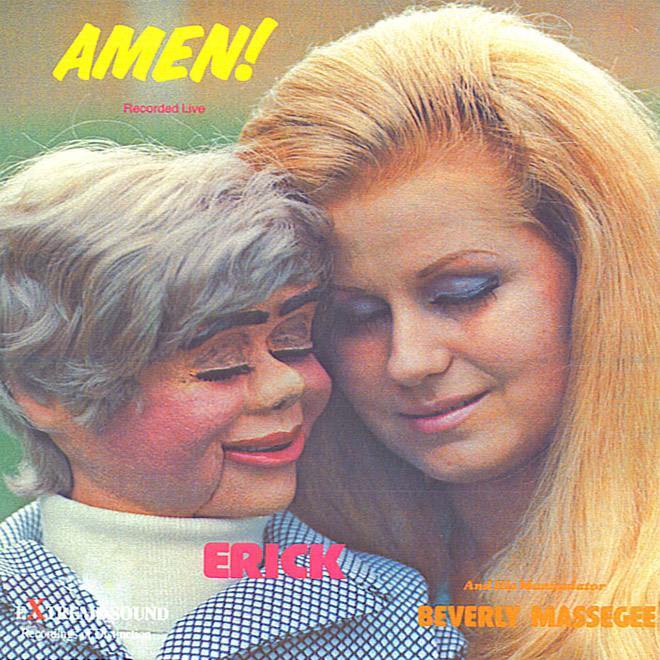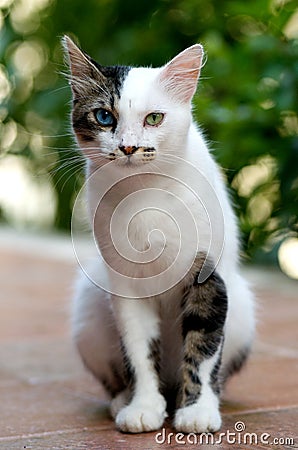The Blue Van Album
Luister naar Midnight Blue van The Desmounts op Apple Music. Stream nummers, waaronder 'Mr. Moto ', 'Sunday ' en meer. The Beatles 1962-1966. The Red and Blue albums were compiled and released in the spring of 1973, a year when the legend of The Beatles was even bigger than it had been when the group was together. Three years after the break-up, all four former Beatles were enjoying enormous solo success. The core UK albums released during The Beatles' time together, 1963-1970: Please Please Me (1963) With The Beatles (1963) A Hard Day's Night (1964) Beatles For Sale (1964) Help! (1965) Rubber Soul (1965) Revolver (1966) Sgt Pepper's Lonely Hearts Club Band (1967) The Beatles (White Album) (1968) Yellow Submarine (1969) Abbey Road (1969) Let It. Blue is the fourth studio album by Canadian singer-songwriter Joni Mitchell, released on June 22, 1971 by Reprise Records. Written and produced entirely by Mitchell, it was recorded in 1971 at A&M Studios in Hollywood, California. Created just after her breakup with Graham Nash, and during an intense relationship with James Taylor, Blue.
The myth of jazz recordings is that they’re pure documents of what occurred in the studio on a given day. That’s broadly true—jazz has always been a live, in-the-moment art form—but how the music is captured can be as important as how it’s played. Nobody knew that better than engineer Rudy Van Gelder, whose productions for Blue Note Records in the 1950s and 1960s permanently shaped the label’s image and reputation.

Born in Jersey City, NJ in 1924, Van Gelder began as an amateur, working as an optometrist by day and making records by night in his parents’ Hackensack home. The musicians would set up in the living room, with a control room adjacent. By 1959, though, he’d moved to a purpose-built studio in nearby Englewood Cliffs.
Van Gelder Studios soon became crucial to the development of mainstream jazz in the 1960s. Savoy, Riverside, and other labels all employed Van Gelder, but it was Blue Note that became most closely identified with his particular sound. And that particular sound was truly unique.
Engineers for Columbia and RCA, and even small labels like Contemporary, strove to preserve the music they recorded as precisely as possible, and they succeeded. An album like Sonny Rollins’ Way Out West, recorded by engineer Ray DuNann in Los Angeles, has an extremely crisp, clear, and balanced sound, totally free of distortion.
On the flip side, a Van Gelder recording has a rough-edged wildness that’s more comparable to a Sun or Motown release. It also has some instantly recognizable sonic fingerprints. The horns and the drums are big and brash, coming right at you. The piano, on the other hand, is frequently muffled and subdued—even rinkydink at times—and unless the bassist is soloing, he’s buried, too.
Legendary producer Don Was—who has worked with Bob Dylan, The Rolling Stones, Iggy Pop, The B-52s, and too many other artists to list here—has been the president of Blue Note Records since 2012. He can still recall the first time he heard a Rudy Van Gelder recording. It was 1966, he was 14 years old and sitting in his mother’s car listening to Joe Henderson’s Mode For Joe on Detroit radio station WCHB.
“I felt like I was having a conversation with Joe Henderson over the AM radio, you know?” Was says. “And I believe that’s a testimony to Rudy’s mic'ing technique. In fact, I [recently] had [Herbie Hancock’s] Maiden Voyage playing on my iPhone, which is essentially like listening to a transistor radio, and it sounded like Freddie Hubbard was standing by the sink playing. So there was something he was doing. I met him twice, and I knew better than to ask for mic'ing secrets, but I’ve read some accounts and… best I can visualize is that he maybe mic'd a little too close for the accepted techniques of the time, and in doing so he had a higher threshold of distortion, that I think translates to immediacy. I think distortion’s a good thing.”
The Blue Van Albums
Nick O’Toole, one of the co-owners of the independent jazz label Posi-Tone (which is celebrating its 25th anniversary in 2020), produces all of their releases himself and acknowledges Van Gelder as a pioneer. “I think Rudy’s style stands the test of time,” he says.
The Blue Van Album Cover
“It may have been different back then, but you listen to it now and at least for me, the tones he gets on the horns are magical, you know? And he did what he could with the drums and the bass, because it was a different type of separation. Nowadays, everyone’s comfortable on headphones, and it’s a whole different way of recording now than back in the day, when you put everybody in the same room and maybe some stuff in between, some gobos. So I think he was limited in that way, but the fact that he was doing it every day in his own studio, the consistency of the sound… that’s the beauty of some of those '50s and '60s records. Maybe the horn’s screaming, but it’s beautiful.”

On certain Blue Note recordings, the use of distortion can go so far beyond convention that it almost becomes noise. Art Blakey and the Jazz Messengers’ 1964 album Free For All is a prime example. Freddie Hubbard’s trumpet, Curtis Fuller’s trombone, and Wayne Shorter’s tenor saxophone all leap out of the speakers, with just a slight crackle. But Blakey’s drums are like a series of explosions, nearly blowing out the microphones and thoroughly drowning out Cedar Walton’s piano and Reggie Workman’s bass.
Blakey’s bands did this frequently; the 1961 album A Night in Tunisia, recorded by an earlier Jazz Messengers lineup, is almost as unhinged—the title track in particular. And yet, these albums are some of the most visceral and exciting jazz you’ll ever hear in your life.
:format(jpeg):mode_rgb():quality(90)/discogs-images/R-4040628-1353256806-2599.jpeg.jpg)
“I’m an engineer, not a producer,” Van Gelder told a New York Times reporter in 2005. “I’m the person who makes the recording process work. I built the studio, I created the environment in which they play, I selected, installed and operated the equipment.” What exactly that equipment consisted of, and how it was operated, was information Van Gelder kept to himself.
We do know that a lot of his equipment was home-built, but some of it was new technology. He was one of the first US engineers, for example, to have and use Neumann microphones. But he would frequently take precision equipment and disguise it—placing Schoeps microphones in Shure housings, for example—to keep peers off his trail.
Blue Note co-founder Francis Wolff’s lush black-and-white photos, taken during the sessions and incorporated into graphic designer Reid Miles’ iconic album covers, were another crucial element to the label’s overall presentation. Van Gelder would often move microphones out of the way before Wolff shot, so that nobody would know what he was using or how it had been positioned.
Not everyone was a fan of Van Gelder’s approach, of course, then or now. In a 1959 Down Beat blindfold test, legendary bassist/composer Charles Mingus said, “He tries to change people’s tones. I’ve seen him do it… I’ve seen him take [trumpeter] Thad Jones and the way he sets him up at the mic, he can change the whole sound. That’s why I never go to him; he ruined my bass sound.'

Fans of ultra-pristine sound—the kind of guys who can spend an afternoon ranking matrix numbers on Steely Dan LPs—have been known to gripe about Van Gelder’s work. Mastering engineer Steve Hoffman infamously wrote on his own website, “Take three or four expensive German mics with a blistering top-end boost, put them real close to the instruments, add some extra distortion from a cheap overloading mic preamp through an Army Surplus radio console, put some crappy plate reverb on it, and record. Then, immediately (and for no good reason), redub the master onto a Magnatone tape deck at +6, compress the crap out of it while adding 5 dB at 5000 cycles to everything. That’s the Van Gelder sound to me.”
To Don Was, Van Gelder’s relative isolation in Hackensack, New Jersey was what allowed him to experiment, and develop his trademark sound. Was says that he went through a similar process himself, in Detroit. “There was no one to teach me engineering, but there were studios that were willing to let me go in at midnight and experiment for a couple of years. And that was the only way I was able to do it, was through trial and error. And you come up with something that’s different than you would have come up with if you were a second engineer at Columbia Studios in New York or something like that, where they taught you the ‘proper’ way and put you in a lab coat and that kind of thing.”
He compares the classic Blue Note sound to that of Sun, Chess, Motown, or Stax recordings—all unique, all instantly recognizable, “so there’s a lot to be said for doing it on your own in a remote, provincial setting, in terms of coming up with personality. And I think Rudy did that—even though he was close to New York City, he might as well have been a thousand miles away, because he was a ham radio operator who built his own gear. That’s the other thing, too, the stuff that’s not necessarily willful, just the signal path he had. That’s as distinctive as a guitar. Every Fender Precision bass sounds different, and every signal chain sounds different, and is gonna have a character.”
The final component of Van Gelder’s sound was the mastering, which was red-hot in order to blare out of the primary music delivery systems of the time: mono jukebox speakers, transistor radios, and car radios.
Was, who visited Van Gelder in his studio, says, “He explained [to me] that his lathe was such an important part of that sound—he had a Scully lathe, and he was buddies with Mr. Scully and they hot-rodded his lathe, basically. I don’t know how to separate that from the sound. I do know this, that if you put up the master tapes, they don’t sound like the records we know. You have to do something to them, you can’t just put them up.”
Like Was, O’Toole believes the mix of rawness and polish in Van Gelder’s classic sound draws the listener in. “You may not hear every bass note, you may lose the accents and the touch on the drums a little bit, but nowadays with the limiting and the compression, it’s too much to handle sometimes. Your brain just can’t process that much information. And not to get into vinyl versus CD, but that’s why some people like vinyl—there’s not as much information there, and it’s within the human hearing range, and that’s why people say it’s ‘warm.’ You probably don’t have 17KHz on a record, and you don’t have 50 Hz on a record either.”
It’s in that hazy zone between “warm” and “hot” that Rudy Van Gelder made his magic. And even if some of what he did was “wrong” from a technical standpoint, well, it made the recordings sound oh so right.
Los Angeles' Techno Empire actually has a cache of Van Gelder's later-year gear for sale on Reverb. Check out the Techno Empire Rudy Van Gelder Collection.